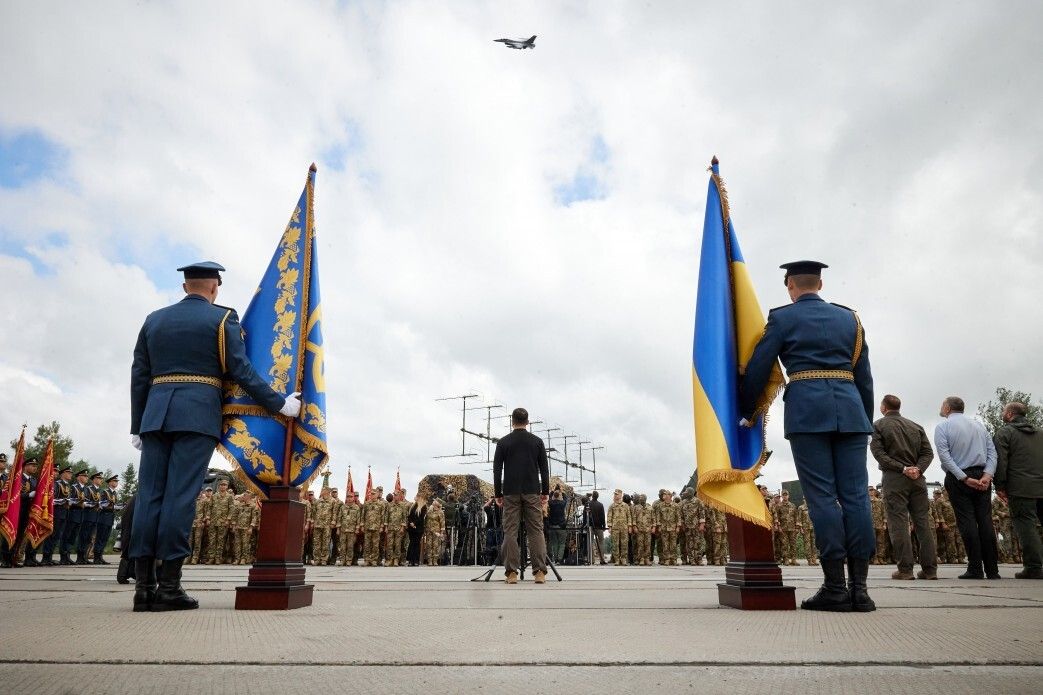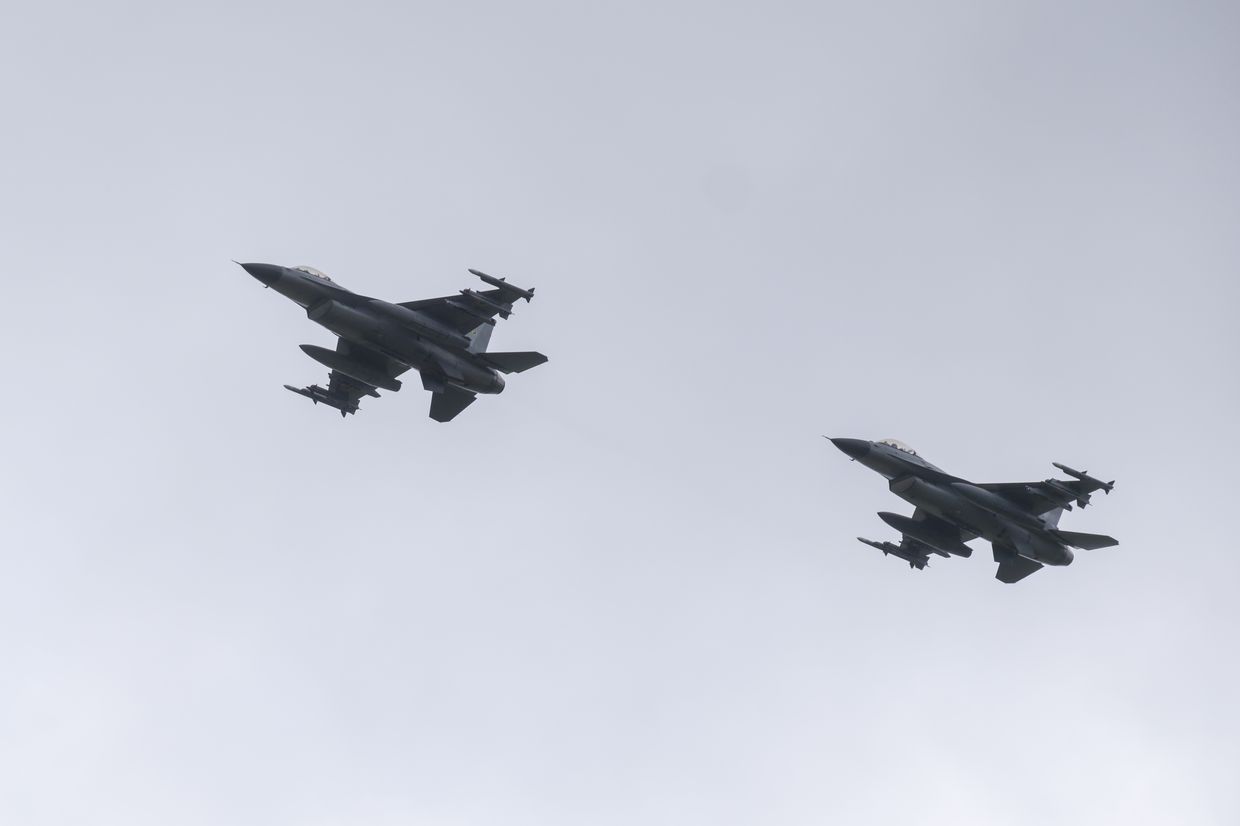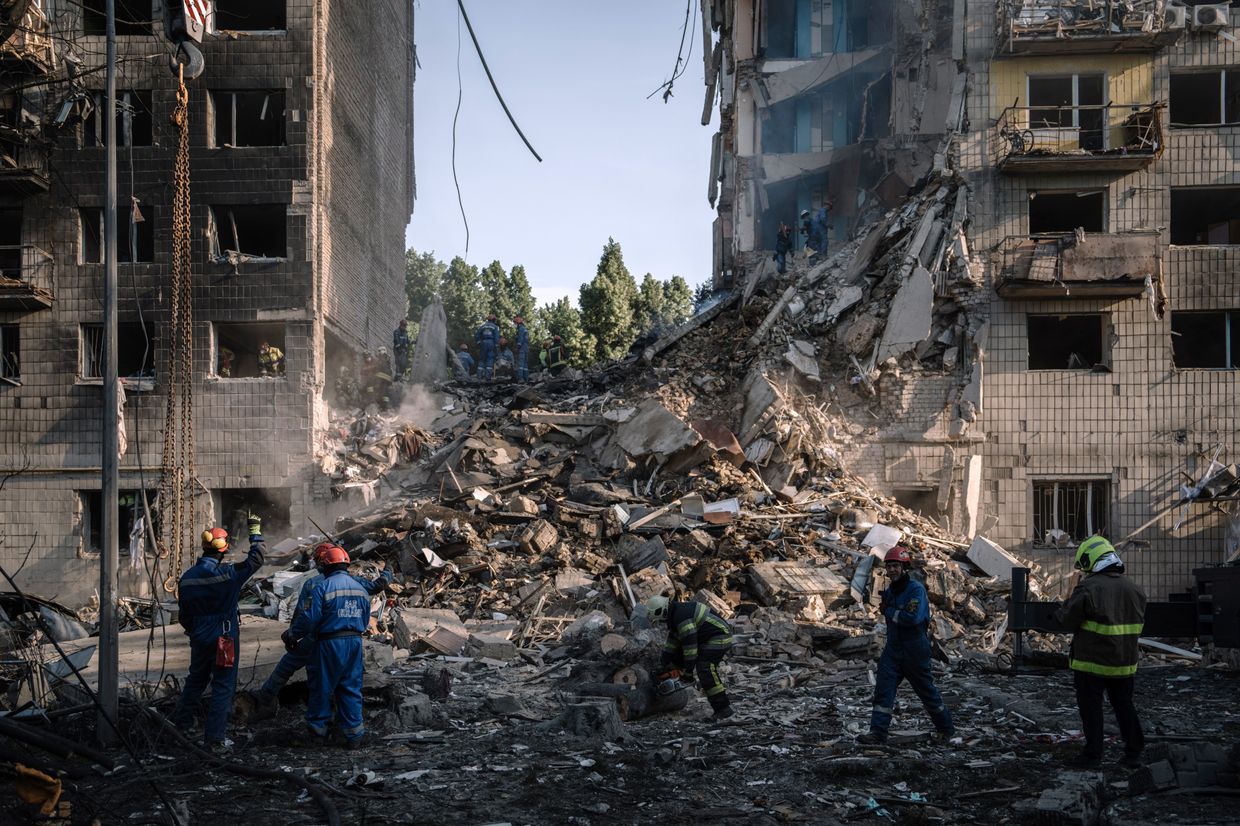After more than a year of waiting, F-16s finally fly in the Ukrainian skies.
President Volodymyr Zelensky unveiled two of the first U.S.-made fighter jets sporting blue-and-yellow roundels and a Ukrainian coat of arms in a ceremony on Aug. 4, confirming earlier media reports.
While providing little details, the footage published by the president gave some glimpse into what kind of aircraft Ukraine received and how it intends to use them.
As expected, the F-16s will serve, first of all, to boost Ukraine's sky shield.
The Air Force will likely treasure its first handful – likely no more than 10 – of valuable jets and keep them away from dangerous Russian air defenses.
Their value may grow as the rest of the roughly 80 pledged jets roll in in the coming years, presenting a potential for a broader scope of tasks.

Protecting Ukraine's sky
Ukraine's first F-16s were promised by the Netherlands and Denmark, with aircraft from Norway and Belgium to follow later this year.
Both the Netherlands and Denmark have been using F-16s fitted with the Mid-Life Update (MLU) developed in the 1990s, giving them the designation F-16 AM.
Although these variants lack some of the most advanced features, like the AESA radar built into the Block 70/72 versions, the F-16 AMs are nevertheless an improvement over Ukraine's Soviet-era aircraft.
The weaponry visible on the two presented F-16s suggests they are likely to be used primarily for air defense purposes. According to The Telegraph, they have already carried out this task in Ukrainian skies.
The War Zone defense magazine noted that the presented jets are likely equipped with AIM-9M and AIM-120 AMRAAMs air-to-air missiles, both of which are already present in Ukraine's stockpiles.
The AIM-9M is an improved variant of the U.S.-made infrared homing Sidewinder missile, a traditional armament for American jets that was also repurposed for Ukrainian air defenses.
Peter Layton, former Australian Air Force officer, Associate Fellow at RUSI, and Visiting Fellow at Griffith Asia Institute, said that the weaponry appears to be AIM-9M.

"The AIM-9M would be good enough for (intercepting) cruise missiles and drones," Layton said in a comment to the Kyiv Independent. The expert added he was expecting Ukraine's F-16s to wield AIM-9X, "which is a more modern version with higher maneuverability."
Both the AIM-9M and AIM-9X boast high off-boresight capabilities, which means they can track targets that are highly distant from their boresight. This ability would be only improved by the Joint Helmet Mounted Cueing System (JHMCS) Ukrainian pilots are equipped with in the published video, The War Zone commented.
Russia's aerial campaign over the spring has heavily battered the country's energy grid, necessitating rolling blackouts across the country. While the situation has improved somewhat with repairs and new nuclear units plugged in, it may yet deteriorate again should Moscow restart its attacks.
More powerful air defenses would be crucial to safeguarding Ukraine's energy infrastructure in the months to come.
Layton agreed that the current configuration of F-16s is best suited for air defenses: "With only 10 (jets) – so say seven available daily for operations – using (them) for air defense against cruise missiles and Shahed drones seems reasonable."
"The AIM-9 constitutes a fairly cost-effective solution for this task," Fabian Hoffmann, defense expert and doctoral research fellow at the University of Oslo, told the Kyiv Independent.
"Ideally, these initial deliveries will ease the burden on Ukraine's ground-based air and missile defense and help save scarce interceptor numbers," Hoffmann said, adding that he does not expect "any type of immediate battlefield effect."

Aircraft interception and ground strikes remain uncertain
The AIM-120 AMRAAM that The War Zone also identified on the F-16s is a beyond-visual-range missile with active radar guidance that some believe will be suitable for intercepting Russian tactical bombers terrorizing Ukrainian front-line troops.
Justin Bronk, Senior Research Fellow at RUSI, believes that the footage actually showed CATM-120B dummy rounds, which are “the inert variant of the AIM-120B." Speaking to the Kyiv Independent, he acknowledged that "AIM-120C variants of AMRAAM may well have also been supplied," however.
Yevhen Dykyi, a war veteran and a former officer of the Aidar Battalion, said on air on Freedom TV that Russian attack planes like Su-24 drop glide bombs at Ukraine from a distance of roughly 50-70 kilometers.
This makes it difficult for Ukrainian front-line air defenses, most commonly with a range of 40 kilometers, to intercept them. That would not be an issue for AMRAAMs which, according to different modifications, can have a range somewhere between 100-160 kilometers, Dykyi said.
However, Layton explained that such an interception would be akin to "a headshot"—both aircraft would have to be traveling head-to-head at high speeds. If one aircraft turns away at such a long distance, the missile will miss.
"The Russians are dropping glide bombs some 40-60 kilometers inside Russian airspace and then turning away," Layton said.

"The F-16 would have to be heading directly towards the Russian fighter at over 500 knots ( 926 km/h) and launch at, say, 50 kilometers," the expert noted, saying that this would put the F-16 within the range of Russian air defenses.
The interception would not be impossible but would require "coordination from a ground radar site or an AWACS," which "would be hard for the Ukrainian Air Force to arrange," Layton added.
Luckily for Ukraine, the arrival of the ASC-890 surveillance planes promised by Sweden is likely to improve its F-16s' range capabilities in the future.
Another key feature observable on the Ukrainian F-16s are the Pylon Integrated Dispensing System Plus (PIDS+), which can include Electronic Combat Integrated Pylon System Plus (ECIPS+), both produced by Terma in Denmark, The War Zone writes.
The pylons serve as self-defense systems, capable of spotting incoming missiles and dispersing flares. The ECIPS+ also boasts an electronic warfare suite.
What was not visible on Ukraine's new F-16s is also telling.
Layton said he saw "no indication that the aircraft have an air-to-ground role."
"There (was) no LANTIRN pod fitted or its carriage pylon visible," the expert said, referring to a U.S.-made targeting pod system used for precision strikes against ground targets.
This would mean that when launching long-range weapons like Storm Shadow or SCALP, Ukraine will likely continue to rely on its Soviet-era Su-24 and possibly on France's Mirage 2000-5s after their arrival.
Even if the other F-16s Ukraine receives are better suited for ground targets, Kyiv will likely be limited by the restrictions on strikes deep within Russian territory.
Washington already said it made no change to its policy after the arrival of F-16s, meaning U.S.-made arms can be used only on Ukrainian territory or just across the Russian border.
While Denmark and the Netherlands indicated that Ukraine would be able to use their F-16s to strike targets inside Russian airspace "as self-defense," many such announcements made by the Western allies in the past have proven hollow. Belgium, in turn, said their F-16s are for use within Ukrainian airspace only.
This means Ukrainian F-16s are unlikely to be devastating airfields or parked bomber planes in Russia anytime soon.
Bronk said that the F-16s may be of some use against ground targets, as they present a "more efficient way to deliver stand-off glide bombs like GBU-39 and GBU-62 against fixed targets on the front lines and HARM missiles to suppress Russian air defenses."
What next?
Though the first jets finally landed in Ukraine, the work has just begun.
The Ukrainian Air Force must now move away from its Soviet-era heritage to adapt to Western systems. On the bright side, the arsenal of Western arms shipped in the past two years will make the process at least somewhat easier.
Another key task is the protection of airfields.

Only weeks before their arrival, Russia launched several successful strikes against Ukrainian air bases, allegedly destroying several Soviet-era aircraft while their reconnaissance drones hovered above.
Russia will certainly seek to destroy the U.S.-made aircraft as soon as possible, not only for military purposes but also as a propaganda boost. To avoid that, Ukraine is reportedly preparing underground bunkers for the F-16s.
Additional air defenses, in which Kyiv is also growing increasingly reliant on Western supplies, are also a key factor.
Some 20 F-16s are expected to arrive in Ukraine this year, and some 60 afterward. However, Zelensky said the country needs at least 128 F-16s to counter Russian airpower successfully.
Efforts to obtain more commitments and to speed up the delivery of the already-promised aircraft are underway.













